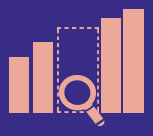Understanding Data Warehouse: the foundation for consistent, good decisions. I present the basics ✎ and illustrate them using the example of SAP BW.☝ SAP BW is being superseded by BW/4HANA, SAP HANA (SQL Data Warehouse) and the SAP Data Warehouse Cloud. Many customers still have SAP BW in use today, so it is definitely still relevant.
The field of application of SAP is growing – especially in the area of Business Warehouse the opportunities are increasing every year. However, newcomers in particular find it difficult to get started, as there are a number of different areas.
As an SAP Analytics consultancy, we know what to look out for in terms of the basics. Countless users and decision makers ask us from time to time what a data warehouse brings or which basics are important.
For this reason, I have created this blog post. In it, I explain in more detail which comprehensive evaluations you can create with the SAP Data Warehouse. In addition, I clarify the question of what basics you need to know about SAP BW.

What is SAP BW?
SAP BW is a comprehensive package from SAP that consists of a symbiosis of database, management tools and reporting programs. The data warehouse also consists of interfaces, with which even third-party software far from . SAP can be used.
SAP BW is an essential and central component for a number of SAP applications.
Why you can use a data warehouse?
The data warehouse is a solution that is much more complex than providing it via Excel. Of course, it requires more time, especially in the beginning, after all you have to set up the DWH. In addition, it is the basis for checking the most diverse application situations as an entrepreneur.
That is by no means all, because by using SAP BW you can create a wide variety of graphics and evaluate the data analytically. As a SAP Analytics consulting company, we are at your side as a contact partner and will be happy to show you the various application options.
1. Data warehouse as a central data retrieval option
With a data warehouse you get an application with which you can optimally prepare the data and use it in a centralized way. If you work with different programs, you may end up with different data.
If, on the other hand, you use centralized data procurement and choose the data warehouse, you minimize the risk. But that is not all, because in addition you can minimize the risk with the right numbers and you can interpret the company key figures correctly.
2. Cost reduction through SAP BW
If you decide to use SAP BW and the Data Warehouse (DWH), this will cost you money at first. However, as soon as the whole thing is set up and the data matches correctly, you can reduce costs sustainably.
In addition, the SAP Data Warehouse forms the foundation for analytically testing different application situations.
Your controllers in particular will thank you, because the integration of the Data Warehouse and SAP Data Intelligence (aka SAP Data Hub) allows you to leverage structured and unstructured data for new insights and compile reports in a completely new way.
When using the SAP Data Warehouse, it is important that you choose a variable concept that also has a stable architecture. The core should be harmoniously built and independently designed. Proper development guidelines based on best practice approaches (such as LSA ++) help to implement a consistent architecture.
If you succeed in this, you can create individual case situations. Specifically, you can optimize marketing, you can raise controlling to a new level, and you can easily adjust pricing calculations using the data.
At the end of the day, with SAP Data Warehouse you get a solution that grows continuously and gives you a cost reduction that is not to be sneezed at.
3. Build up data and knowledge centrally and benefit across the board
By using the DWH, you can collect data centrally, network the knowledge in your company and at the same time ensure an increase in productivity. Gone are the days of using different sources and making your business look more like a mess – with DWH, you get a brilliant solution to bring everything together.
Last but not least, it gives you a solution to unify processes, compete against the competition and survive in the modern age.
More reasons to use SAP Data Warehouse:
The three reasons presented are crucial, but there are three more reasons to use it. If you decide to centralize the data, there is no need for multiple aggregations of any data from different sources.
In addition, the data can be better prepared and the data analysis takes less time. Last but not least, you can make the data warehouse available to users and thus raise your company to a new level.

The peculiarities of an SAP Data Warehouse
Around the DWH it is important to note that this type is by no means 0815. Rather, you get an individual enterprise solution, which, in contrast to other systems, is characterized by the following peculiarities:
Values remain the same
On the one hand, the Data Warehouse is characterized by the peculiarity of constancy. The values normally remain the same and should only be changed in special situations. The majority of users are non-authorized, and thus have read-only access.
- Data is aligned
The data used is by no means function-oriented or designed for diverse processes. Instead, the data is viewed from different perspectives, and is thus designed for subject areas. As a decision maker, you need to make sure that the data is viewed on the basis of different dimensions. Here, you must pay particular attention to business metrics such as sales.
- Use of a holistic system
With the same facts there are clearly defined units, the system in the data warehouse is designed holistically. In addition, it is designed to avoid inconsistencies.
- Defined by periods and traceable
If you decide to use the SAP Data Warehouse, the data in the system remains traceable. Everything is clearly traceable, the process can be interpreted in a comprehensible way. In addition, the data is arranged in time-defined periods. This allows you to see exactly how your company has developed within a specific time period. The data is presented in detail and can be examined transparently.
A good introduction is provided by the book: Praxishandbuch SAP BW.
Understanding Data Warehouse: These functions are available
The data warehouse makes everyday business easier for you as an entrepreneur. Decisions can be easily substantiated with this instrument. In addition, the DWH is considered intuitive and flexible. Last but not least, the analysis options are interesting.
You can use the tool to query reports and create statistics, and it also includes data and text mining.
In summary, it can be said that a data warehouse is characterized by its versatility and will significantly facilitate your decisions. Understanding Data Warehouse: I can recommend the DSAG guide at this point.
Understanding Data Warehouse: We would be happy to advise you personally and prepare your data for your business!
